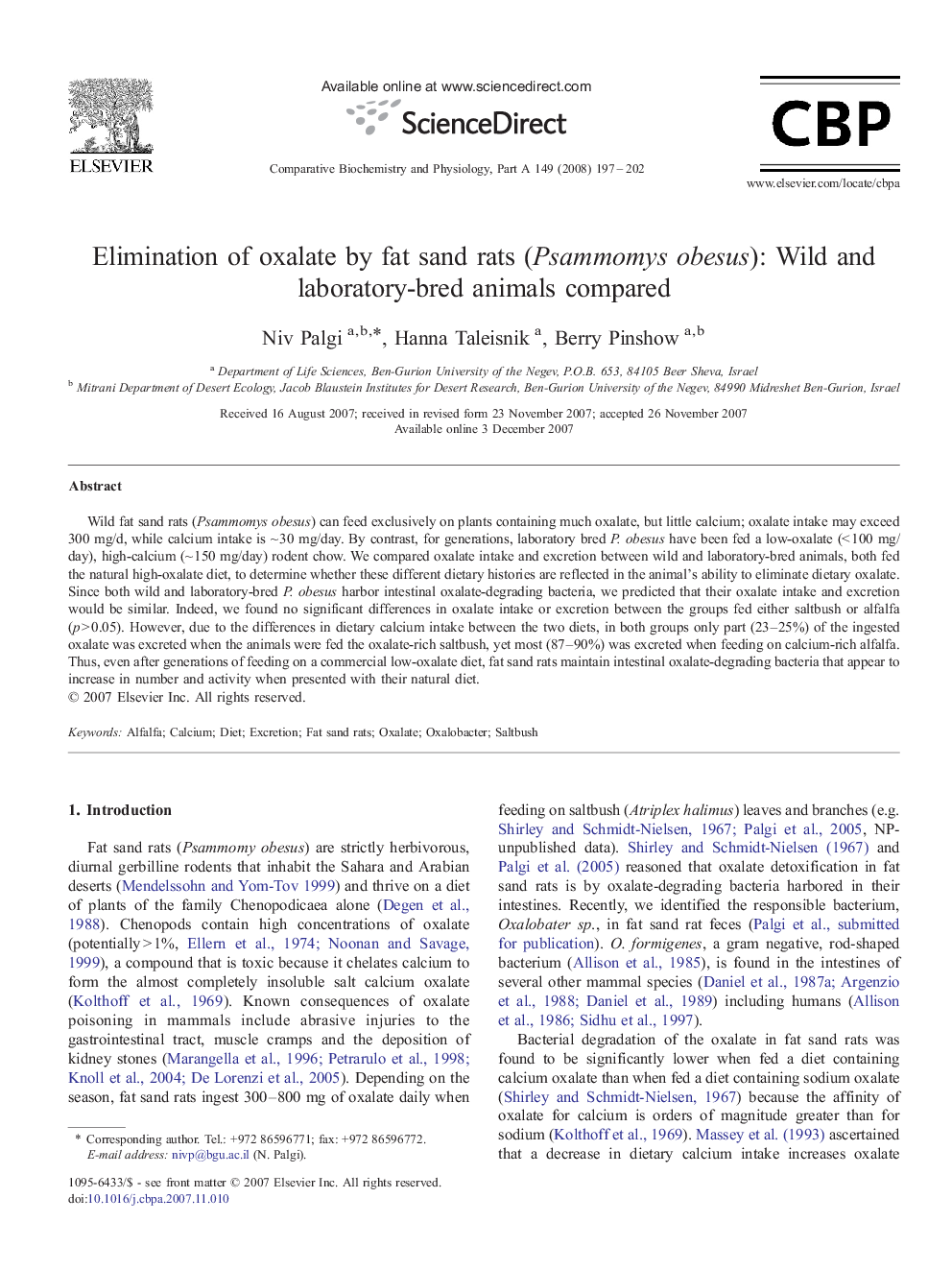| کد مقاله | کد نشریه | سال انتشار | مقاله انگلیسی | نسخه تمام متن |
|---|---|---|---|---|
| 1974219 | 1060343 | 2008 | 6 صفحه PDF | دانلود رایگان |

Wild fat sand rats (Psammomys obesus) can feed exclusively on plants containing much oxalate, but little calcium; oxalate intake may exceed 300 mg/d, while calcium intake is ~ 30 mg/day. By contrast, for generations, laboratory bred P. obesus have been fed a low-oxalate (< 100 mg/day), high-calcium (~ 150 mg/day) rodent chow. We compared oxalate intake and excretion between wild and laboratory-bred animals, both fed the natural high-oxalate diet, to determine whether these different dietary histories are reflected in the animal's ability to eliminate dietary oxalate. Since both wild and laboratory-bred P. obesus harbor intestinal oxalate-degrading bacteria, we predicted that their oxalate intake and excretion would be similar. Indeed, we found no significant differences in oxalate intake or excretion between the groups fed either saltbush or alfalfa (p > 0.05). However, due to the differences in dietary calcium intake between the two diets, in both groups only part (23–25%) of the ingested oxalate was excreted when the animals were fed the oxalate-rich saltbush, yet most (87–90%) was excreted when feeding on calcium-rich alfalfa. Thus, even after generations of feeding on a commercial low-oxalate diet, fat sand rats maintain intestinal oxalate-degrading bacteria that appear to increase in number and activity when presented with their natural diet.
Journal: Comparative Biochemistry and Physiology Part A: Molecular & Integrative Physiology - Volume 149, Issue 2, February 2008, Pages 197–202